History of the NASA Skylab, America's first space station
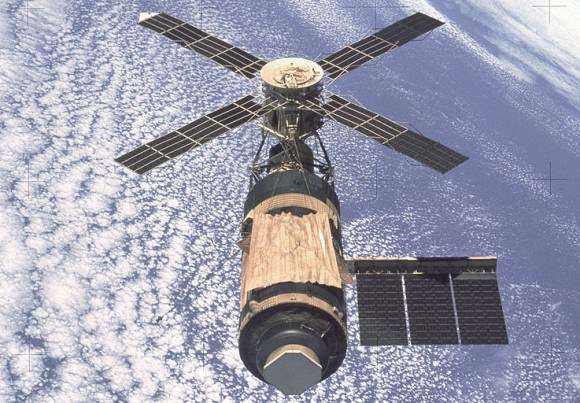
Before there was the International Space Station, before there was Mir, there was Skylab. Established in 1973, and remaining in orbit until 1979, this orbital space station was American's first long-duration orbital workshop, and the ancestor of all those that have followed.
Originally conceived of in 1969, the plans for the station were part of a general winding down that took place during the last years of the Space Race – which officially ran from 1955 to 1972. Having sent astronauts into orbit and achieved the dream of manned missions to the Moon, the purpose of Skylab was to achieve a lasting presence in space. Rather than simply "getting there first", NASA was now concerned with staying there.
Planning:
The seeds of Skylab were planted as early as 1959, when Wernher von Braun – the head of the Development Operations Division at the Army Ballistic Missile Agency – proposed a mission that would use a multistage rocket to place men on the Moon. As part of this mission, the upper stage of the rocket would be deposited around the Earth to function as an orbital laboratory. Known as Horizon, these plans were eventually be seized upon by NASA, which was rapidly forming at the time.
Similarly, as of September 1963, the US Department of Defense (DoD) and NASA began collaborating on a manned facility known as the "Manned Orbital Laboratory" (MOL). The initial DoD plan called for a station that would be the same diameter as a Titan II upper stage, and which would primarily be intended for photo reconnaissance using large telescopes directed by a two-man crew.
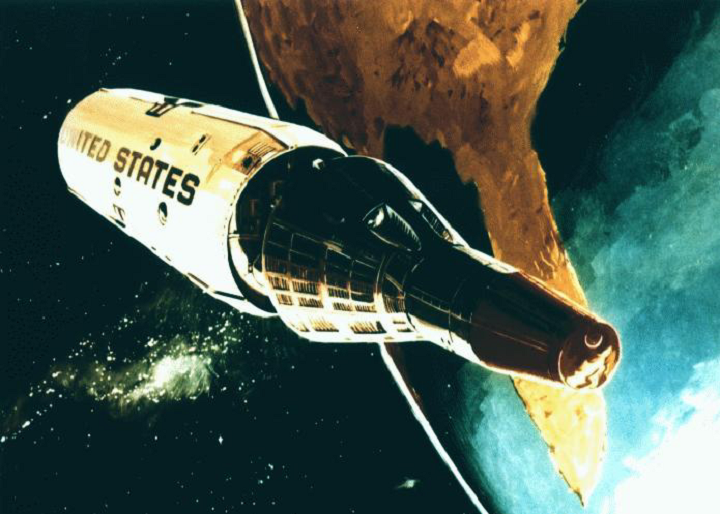
As the head of the Marshall Space Flight Center during the 1960s, Von Braun became concerned that his employees would not have work beyond developing the Saturn rockets intended for the Apollo program. As a result, he began advocating for the creation of a space station using modified Apollo hardware – which included the S-II second stage of a Saturn V rocket.
Throughout 1965, several more proposals were considered that relied on the Saturn S-IVB stage to create a space station. As part of NASA's The Orbital Workshop program, this proposal also called for sending a crew to man the station using a Apollo Command-Service Module (CSM) aboard a Saturn IB rocket.
The crew would dock with the station, vent the residual propellants from the S-IVB stage, fill the hydrogen tank with a breathable oxygen atmosphere, and then enter the tank and outfit it as a station. On August 8th, 1969, after years of development and workshops, the McDonnel Douglas Corporation received a contract to create an Orbital Workshop out of two existing S-IVB stages.
In February of 1970, the program was renamed "Skylab" as a result of a NASA contest. A Saturn V rocket that was originally produced for the Apollo program – before the cancellation of Apollo 18, 19, and 20 – was re-purposed and redesigned to carry the station into orbit.
Launch:
Skylab was launched on May 14th, 1973 on a mission that is sometimes referred to as Skylab 1 (or SL-1). Severe damage was sustained during the launch when the station's meteoroid shield and one of the two solar panels tore off due to vibrations.
Since the station was designed to face the Sun in order to get as much power as possible, and the shield was ripped off, the station rose to a temperature of 52°C. As a result, scientists had to move the space station and effect repairs before astronauts could be dispatched to it.
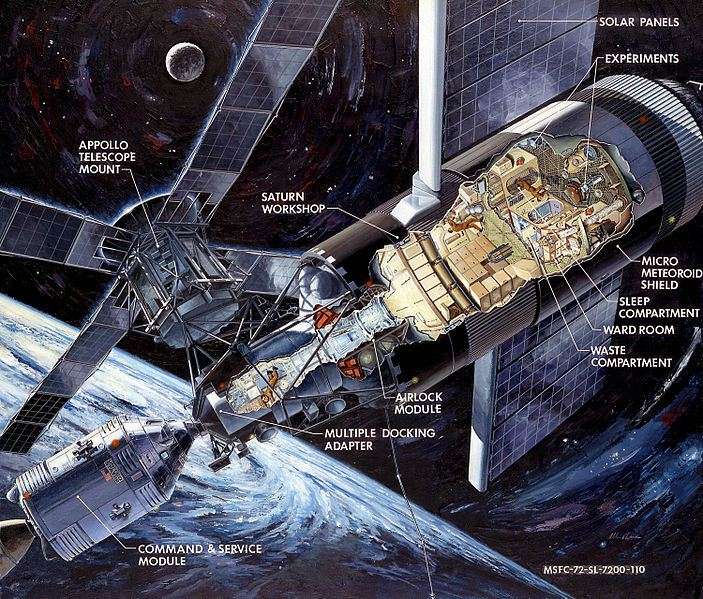
Missions:
The first manned mission (designated Skylab 2, or SL-2) took place on May 25th, 1973, atop a Saturn IB and involved extensive repairs to the station. This mission last four weeks, and astronauts Charles Conrad, Jr., Paul J. Weitz, Joseph P. Kerwin were the crew members. During the mission, the crew conducted a number of experiments, including solar astronomy and medical studies, and three EVAs (extra-vehicular activities) were completed as well.
The second manned mission, also known as Skylab 3 (SL-3), was launched on July 28th, 1973. The crew consisted of Alan L. Bean, Jack R. Lousma, and Owen K. Garriott. The mission lasted 59 days and 11 hours, during which time the crew carried out additional repairs as well as performing scientific and medical experiments.
The third and final mission to the Skylab (Skylab 4, SL-4) was the longest, lasting 84 days and one hour. Gerald P. Carr, William R. Pogue, Edward G. Gibson were the crew, and in addition to performing various experiments, they also observed the Comet Kohoutek. The crew conducted three EVAs which lasted a total of 22 hours and 13 minutes.
Skylab was occupied a total of 171 days and orbited the Earth more than 2,476 times during the course of its service. Each Skylab mission set a record for the amount of time astronauts spent in space.
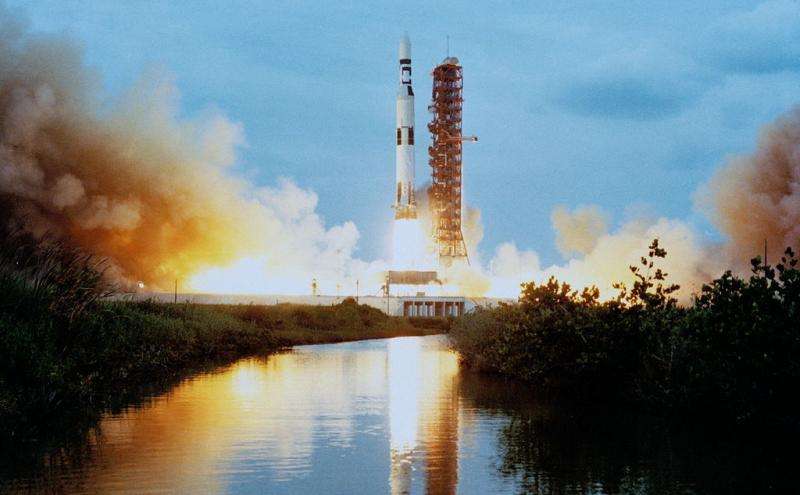
Decommissioning:
Though NASA hoped that the station would remain in orbit for ten years, by 1977, it became clear that it would not be able to maintain a stable orbit for that long. As a result, after SL-4, preparations were made to shut down all operations and de-orbit the station.
Skylab's demise was an international media event, with merchandising of T-shirts and hats with bullseyes, wagering on the time and place of re-entry, and nightly news reports. In the hours before re-entry, ground controllers adjusted Skylab's orientation to try to minimize the risk of re-entry on a populated area.
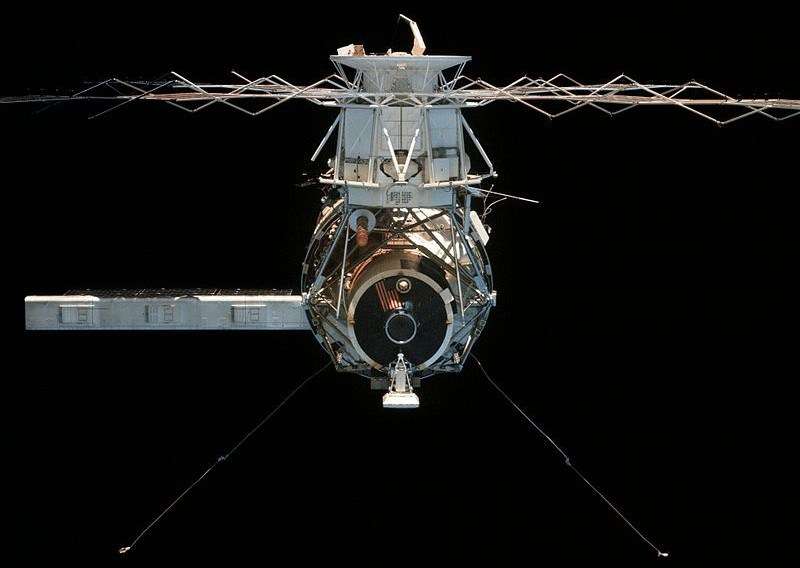
They aimed the station at a spot 1,300 km (810 miles) south southeast of Cape Town, South Africa, and re-entry began at approximately 16:37 UTC, July 11, 1979. The debris reached Earth on July 11th, 1979, raining down over the Indian Ocean and parts of Australia.
They aimed the station at a spot 1,300 km (810 miles) south southeast of Cape Town, South Africa, and re-entry began at approximately 16:37 UTC, July 11, 1979. The debris reached Earth on July 11th, 1979, raining down over the Indian Ocean and parts of Australia.
On May 13, NASA commemorated the 40th anniversary of Skylab's liftoff with a special roundtable discussion broadcast live on NASA TV. The event took place at NASA's Headquarters in Washington, DC, and participants included Skylab and current ISS astronauts and NASA human spaceflight managers.
While the station did not have the history of service that NASA initially hoped for, the development, deployment and crewed missions to Skylab were essential to the creation of the International Space Station, which began almost 20 years after Skylab came home.
Source: Universe Today





















